Nairobi National Park
Jambo! Jambo! Have you tried the Nairobi City Safari. Welcome to the world’s only national park near the city, The Nairobi National Park.
Established on 16th December 1946, 7 km south of Nairobi, the metropolitan park is a must-visit destination. There is no other place in the world with a huge collection of wildlife adjacent to a capital city. It is fenced on 3 sides, where the open southern boundary allows migrating wildlife to move between the park and the adjacent Kitengela Plains. Although considered the smallest park in Kenya compared to most national parks and reserves, this 117.2 sq. km of protected area is home to a vast amount of wildlife, teaming with abundant and diversified fauna, all highly protected by the Kenya Wildlife Services (KWS).
This popular safari destination consists of wide open grass plains and a backdrop of the city scrapers. Across the scattered acacia bush is a wide variety of wildlife, including the endangered black rhino, lions, leopards, hyenas, cheetahs, giraffes, buffaloes, and varied birdlife with over 400 species recorded. Visitors can enjoy picnic facilities viable for corporate events such as bush dinners, team building sessions, weddings, and video and film production. Campsites and hiking trails for hikers are also among this magnificent park’s natural gifts.
The climate here varies with the months of the year. January to March is hot and dry, April to June is hot and wet, and July to October is very warm and wet. Visiting all year is viable, but the dry season is mostly recommended as animals gather around various water points, making spotting easier. The rainy season is difficult as the vegetation is usually high, which hides the wildlife and the muddy murram roads during long rains make game drives seem challenging.

Location: How to get to Nairobi National Park
Set just 7kms south of the city outskirts along Langata road, Nairobi National Park is easily accessible. It opens between 6.00 am to 7.00 pm to all tourists, residents, and non-residents.
By road, you could use matatus, buses, bodabodas taxis, and/or Ubers. You can use car hire services with charges ranging from 150 Ksh – 3000 Ksh. Transport by matatu, bodabodas, and Ubers is easily accessible and much cheaper. You might be charged from 100 Ksh to 500 Ksh from Nairobi city center alias CBD.
For tourists traveling from outside the country, flights are the best option. With flight, you get the bonus of watching large herds of wild moving freely in their natural habitat. The airports recommended are Jomo Kenyatta International Airport (JKIA) or the Wilson Airport for smooth flights.
The park has 7 gates, two of which are solely used by KWS officials and guards. The main gate is along Lang’ata Road, which houses the KWS headquarters. Other gates are Maasai Gate, Mbagathi Gate, and Banda Gate. The last two are service gates.
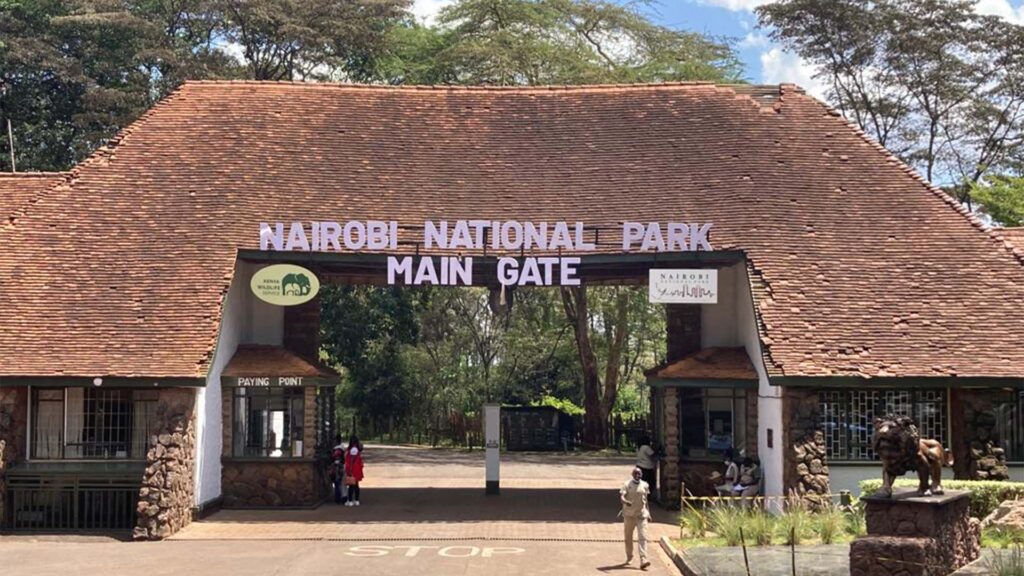
What is the Entry fees for Nairobi National Park
The entry fees for Nairobi National park are as follows;
Citizens: Adult citizens – 430 Ksh and 215 Ksh for children.
Non-residents- Adults pay 45 USD and 22 USD for children
How to Pay The Nairobi City Safari Park Entry
The entry fees for Nairobi Nairobi National Park is paid online on the Ecitizen Platform. The modes of payment allowed include; MPESA, VISA Card, and Direct Deposits to KWS Bank Accounts at any gate. Cash is NOT ALLOWED
What is the cost of the Nairobi National Park Safari
The cost of the Nairobi National Park Safari varies in terms of transport (Private or shared), lunch, drinks, entry fees, and personal items.
If you wish to go for a luxury game safari, drive inside the park. You can opt to hire a safari van or the 4X4 Safari Jeep to take you around the park.
If you own a vehicle, Vehicle charges range from; Ksh. 350 for less than 6 seats, Ksh.1000 for 6-12 seats, Ksh 3000 for 13-24 seats, Ksh 4700 for 25-44 seats, and Ksh 5800 for 45 seats and above. Hiring a land cruiser with a maximum seat of 6 is charged USD 200 and a van at 150 usd for approximately 5 hours.
Alternatively, the cheapest way to see the park is by shuttle. You could travel in a (KWS) bus which leaves the main gate on Sundays at 2 pm for a 2 ½-hour tour. You need to secure a seat ahead of time by booking in person by 1:30 pm. Either, you can call earlier if you would like to do the tour, as times vary depending on the number of tourists interested.
Among other personal items, you are allowed to carry binoculars, a camera, safari hats, sunglasses, sunscreen, picnic items, and water for an enjoyable day-safari experience.

What to Expect on the Nairobi City Safari
Nairobi National Park is the most accessible game reserve inside a city. A visit to Kenya, the birthplace of safari, is incomplete without exploring this iconic park. This Nairobi safari offers a glimpse of Kenya’s rich wildlife. A four-wheel-drive van, jeep, or truck is the best way to navigate the park’s rugged terrain.
The park provides incredible game-viewing opportunities with a stunning city skyline in the background. Over 400 bird species thrive here, including crowned cranes, guinea fowls, vultures, ostriches, ground hornbills, and parrots. Although elephants are absent, the park hosts four of the Big Five. Ungulates dominate the landscape, with elands, hartebeests, impalas, wildebeests, and Thomson and Grant’s gazelles being the most common.
Known as ‘Kifaru Ark,’ the park is a vital sanctuary for rhinoceroses. It protects over 50 endangered black rhinos, making it one of Africa’s most successful conservation areas.
For a quick wildlife experience, Nairobi Safari Walk, Nairobi Animal Orphanage, and The David Sheldrick Wildlife Trust (DSWT) are excellent choices. Nairobi Safari Walk stands out as a top short safari in Kenya. The elevated wooden boardwalk provides a close view of the animals, offering a preview of Kenya’s diverse parks and reserves. Knowledgeable tour guides enhance the experience by sharing fascinating facts about the wildlife.
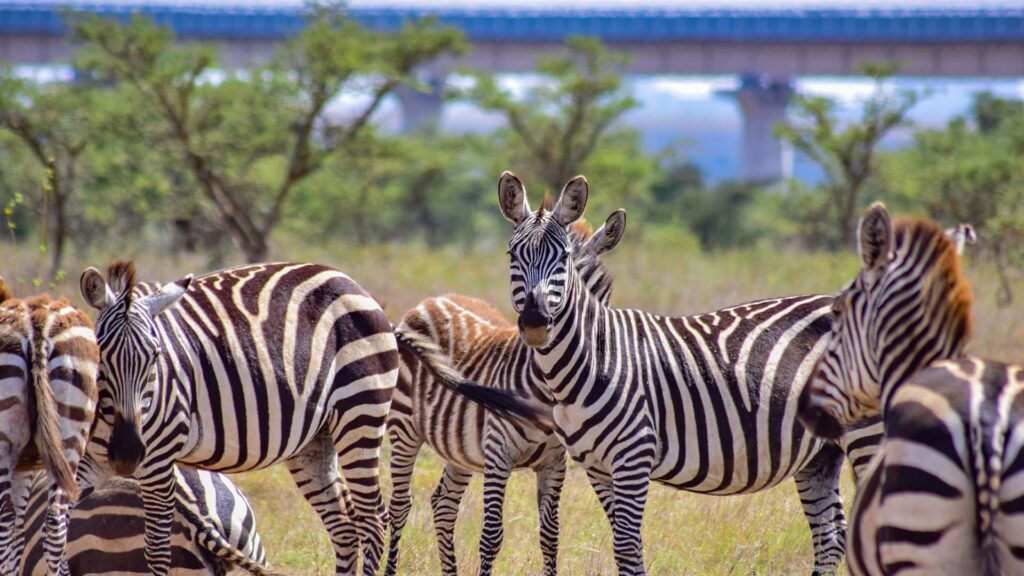
Nairobi Animal Orphanage
Nairobi Animal Orphanage gives animal and nature lovers a soul-fulfilling experience. Visitors watch experienced carers and veterinary doctors feed and nurture endangered, fragile, and sick wild animals. The orphanage provides a secure environment where animals recover safely. The caged wild animals, protected by electric fences, allow visitors to observe their natural behaviors up close. The orphanage’s adoption program creates a safe haven for vulnerable wildlife, ensuring their survival.
The David Sheldrick Wildlife Trust (DSWT) elephant nursery offers another breathtaking experience in Nairobi National Park. Nairobi National Park lacks elephants among the Big Five, but DSWT bridges this gap by rescuing orphaned baby elephants. Visitors watch as caretakers feed, water, and bathe the calves, providing them with essential care. The nursery raises milk-dependent elephants until they reach 2-3 years. Afterward, they move to Tsavo East National Park, where they transition back into the wild.
Other attractions in Nairobi National Park include trekking to the historic Ivory Burning Site.
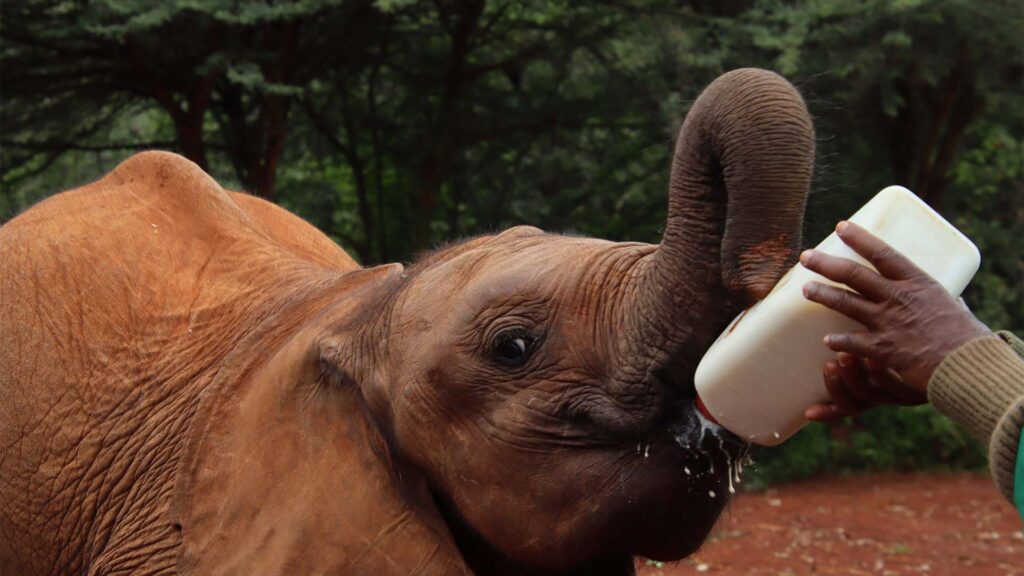
Tips to note:
- You can shop for gifts and souvenirs and see park maps at the Kifaru shop next to Nairobi National Park’s main gate.
- Two facilities offer palatable African dishes and cuisines at affordable prices for meals and drinks. You can opt for The Club House or Sebastian Café, which are only 1km from the main park entrance.
- Nairobi city offers an abundance of accommodation options. Make sure you consult your travel agent for more information on this.
- Among the general and common-courtesy rules of the park, kindly
-
- Do not litter
- Do not feed the animals
- Do not harass the animals in any way
- Do not leave your vehicle
- Never drive off the designated roads
- Avoid getting out of the vehicle while close to the animals.
-
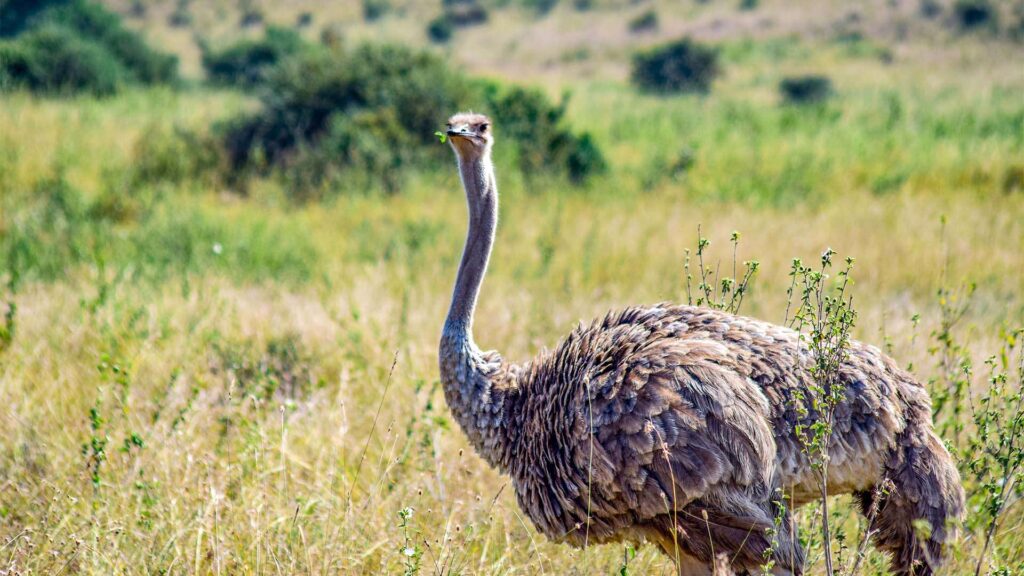
Pros and Cons of Nairobi National Park Safari
+Good wildlife viewing with most safari animals present
+Easy day or half day from Nairobi
+Interesting photos possibility with animals against the city backdrop
+Safari board work with unusual animals, including bongo antelope
+Animal orphanage
+High density of Black Rhino
-The proximity to the city makes the park lack wilderness appeal
-No elephants
-Only one lodge inside the park
The Nairobi City Safari Itinerary
Nairobi National Park Safari Morning Game Drive
Nairobi National Park Safari Morning Game Drive offers a thrilling wildlife experience just 7 km from Nairobi’s city center. The safari starts at 6:00 AM with hotel pickup, ensuring you catch the best wildlife sightings. The park is home to lions, rhinos, buffalos, giraffes, zebras, and over 400 bird species, providing an authentic safari without leaving the city. Your guide navigates the open savannah, searching for big cats, grazing rhinos, and large herbivores as the sun rises.
The 5 to 6-hour game drive includes stops at key attractions like the Ivory Burning Site Monument and the Hippo Pool, where you can take a short guided nature walk. After exiting the park around 12 and 1 pm, you can visit the David Sheldrick Elephant Orphanage or the Giraffe Centre before returning to your hotel by 1 pm. This Nairobi National Park Safari is the perfect way to experience Kenya’s wildlife in just one morning.
Nairobi National Park Safari Afternoon Game Drive
Nairobi National Park Safari Afternoon Game Drive is a perfect way to explore Kenya’s wildlife just 7 km from Nairobi’s city center. The safari starts with a hotel pickup at 1:00 PM, ensuring you arrive when wildlife is most active. The park is home to lions, rhinos, buffalos, giraffes, cheetahs, and over 400 bird species, making it ideal for game viewing. Your guide will take you through the savannah grasslands and acacia woodlands, searching for predators like lions and cheetahs.
The 5 to 6-hour game drive includes stops at the Ivory Burning Site Monument and the Hippo Pool, where you can take a short nature walk. By 6:00 PM, you’ll exit the park, capturing stunning sunset photos. If time allows, you can visit the Giraffe Centre before returning to your hotel by 6:30 PM. This Nairobi National Park Safari is perfect for an afternoon wildlife adventure.
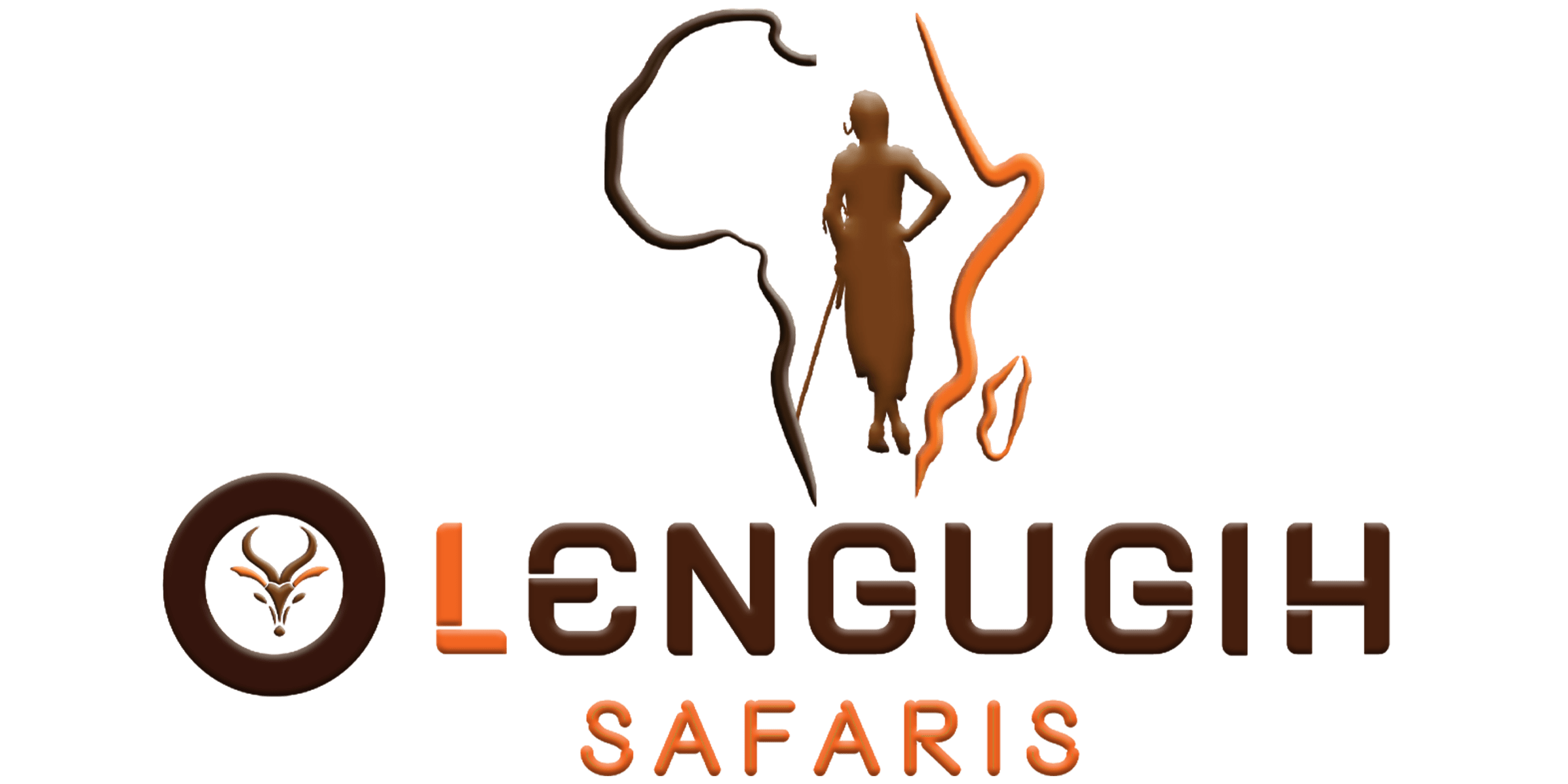
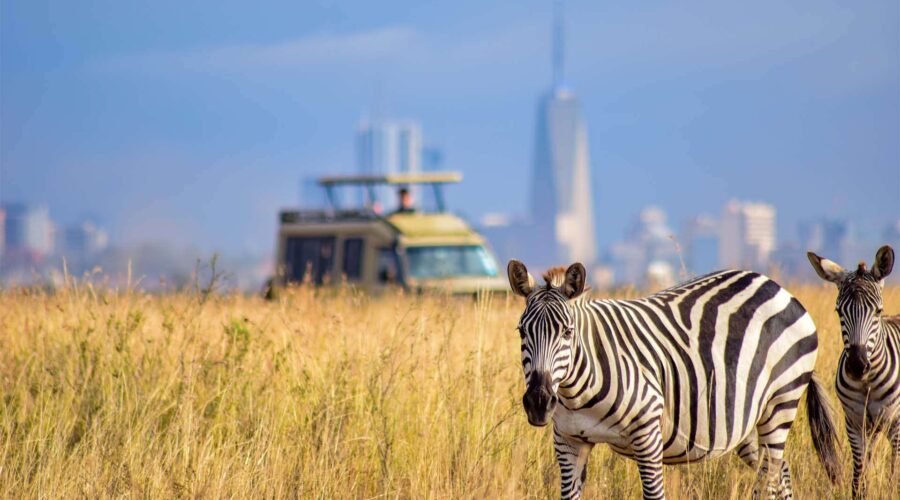

The real picture of the nairobi national park described in writing.Very accurate.